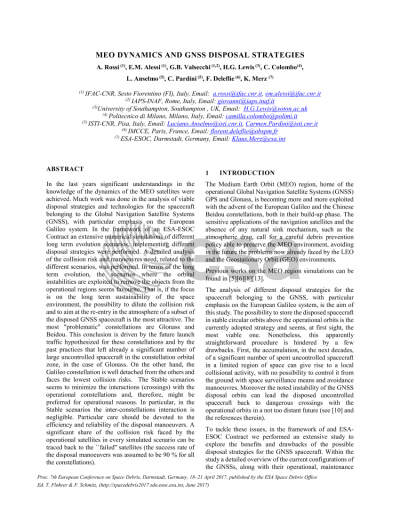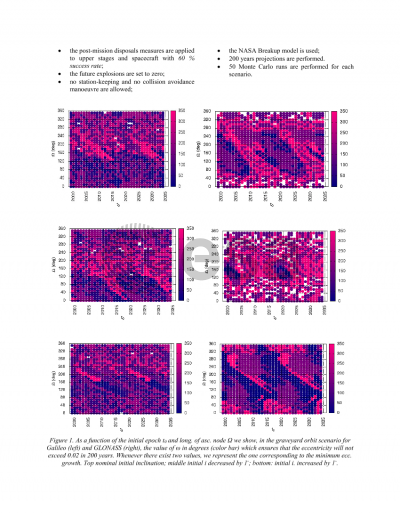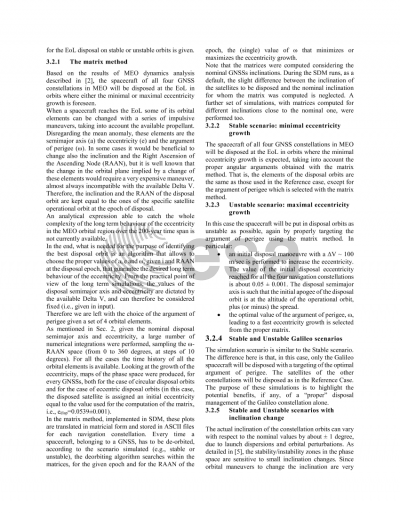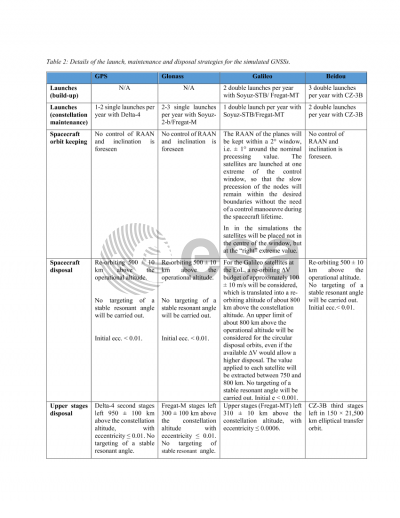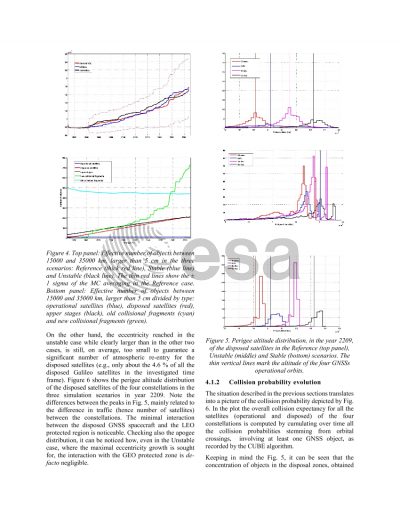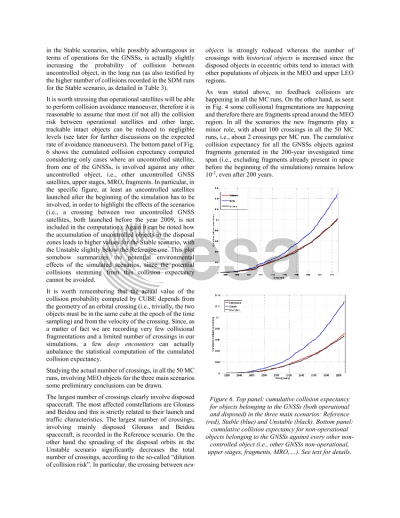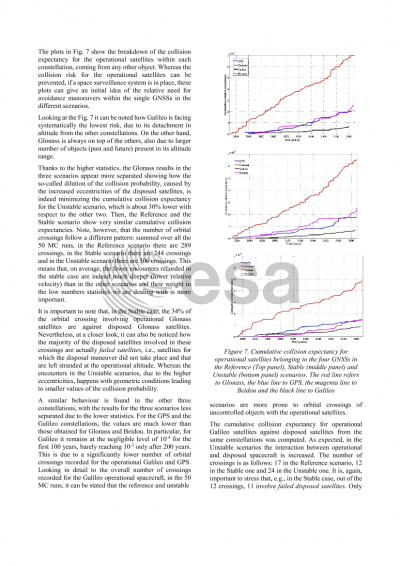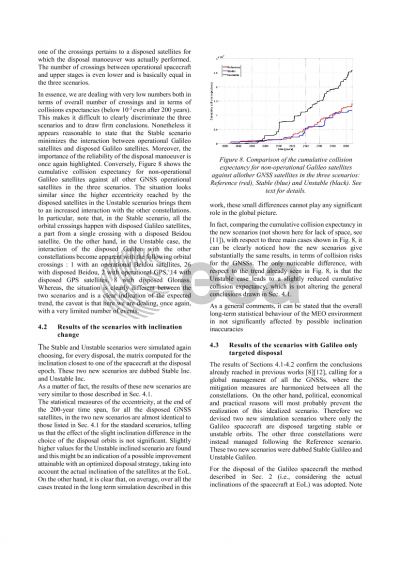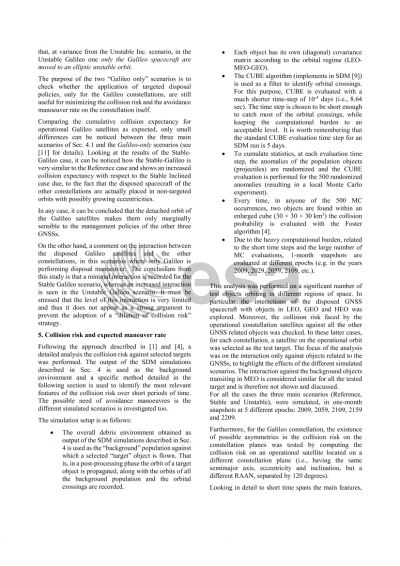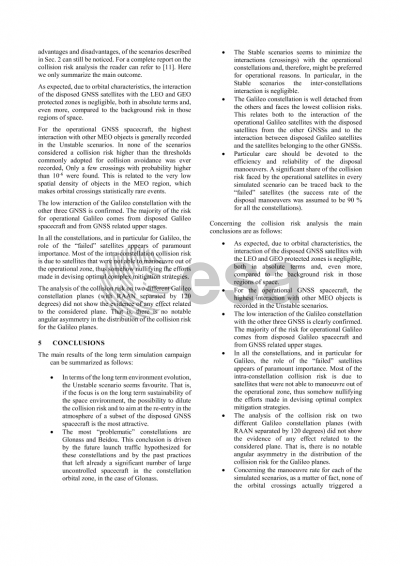Document details

Abstract
In the last years significant understandings in the knowledge of the
dynamics of the MEO satellites were achieved. Following these
achievements, much work was done in the analysis of
viable disposal strategies and technologies for the spacecraft
belonging to the Global Navigation Satellite Systems (GNSS),
with particular emphasis on the European Galileo system.
In this paper we summarize the most important results obtained
in the last few years by the authors, mostly in the framework of an
ESA-ESOC Contract.
First a summary of the findings on the dynamical environment and on
possible advanced technologies for de-orbiting are given.
Then the results of extensive numerical simulations of the long term
evolution scenarios, implementing different disposal strategies, are shown and discussed. A detailed analysis of the collision risk and manoeuvres need, related to the different scenarios, was performed.
The possibility to store the disposed spacecraft in stable circular orbits above the operational orbits is the currently adopted
strategy and seems, at first sight, the most viable one. Nonetheless, this procedure is hindered by a few drawbacks. First, the accumulation of a significant number of spent uncontrolled spacecraft in a limited region of space can give rise to a local
collisional activity, with no possibility to control it from the ground with space surveillance means and avoidance manoeuvres. Moreover the noted instability of the GNSS disposal orbits can lead the disposed
spacecraft back to dangerous crossings with the operational orbits in a not too distant future.
In terms of the long term evolution, the scenarios where the
orbital instabilities are exploited to remove the objects from the operational regions seems favourite. That is, if the focus is on the long term sustainability of the space environment, the possibility to dilute the collision risk and to aim at the re-entry in the atmosphere of a subset of the disposed GNSS spacecraft is the most attractive.
The most "problematic" constellations are Glonass and Beidou. This conclusion is driven by the future launch traffic hypothesized for these constellations and by the past practices that left already a significant number of large uncontrolled spacecraft in the constellation orbital zone, in the case of Glonass. On the other hand, the Galileo constellation is well detached from the others and faces the lowest collision risks.
The Stable scenarios seems to minimize the interactions (crossings) with the operational constellations and, therefore, might be preferred for operational reasons. In particular, in the Stable scenarios the inter-constellations interaction is negligible.
Particular care should be devoted to the efficiency and reliability of the disposal manoeuvers. A significant share of the collision risk faced by the operational satellites in every simulated scenario can be traced back to the "failed" satellites (the success rate of the disposal manoeuvers was assumed to be 90 % for all the constellations).
Study performed under ESA Contract.
Preview
